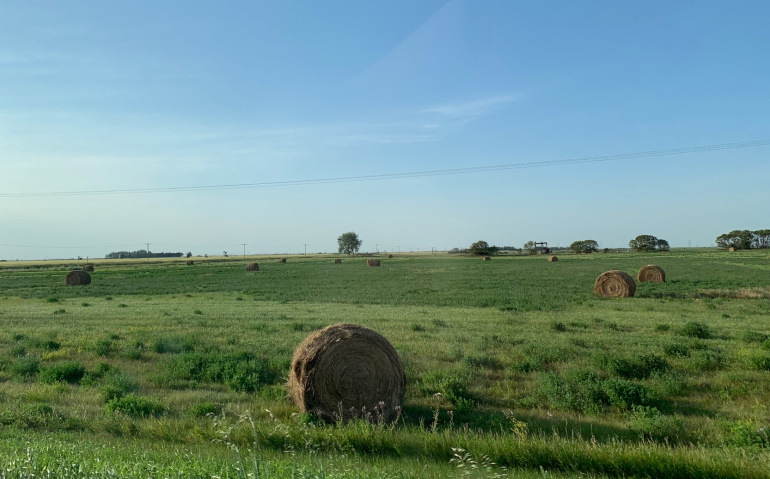Many Saskatchewan producers are regarding the recent and widespread rainfall as a positive sign for things to come, despite the variable impact it has had on actual crop and pasture conditions.
It was noted that, in some areas, the rain came just in time to carry crops forward through flowering and grain fill, while in others the rain came too late to make much of a difference to crops or pastures.
Producers in regions that received precipitation are hopeful that their pastureland experiences a quick recovery from dry conditions and grazing. Heavy precipitation has also led to some replenishment of livestock water supplies, reducing the need to haul water.
Along with the moisture, cooler weather has also helped sustain or improve topsoil moisture levels provincewide. While variable on a region-to-region basis, most areas have seen an increase in levels as of late.
Provincially, cropland topsoil moisture levels are sitting at a two per cent surplus, 71 per cent adequate, 22 per cent short and five per cent very short. Hayland topsoil moisture is reported at a one per cent surplus, 60 per cent adequate, 30 per cent short, and nine per cent very short. There was no surplus reported for provincial pasture topsoil moisture levels, but 59 per cent is rated as adequate, 30 per cent short, and 11 per cent very short.
The addition of moisture and cooler temperatures has given crops a break from the stresses of dry conditions and persistent heat, allowing them to continue to fill.
Returning to precipitation; the Eston area reported the most rain in the province, with 83 millimetres (mm), followed closely by Bethune with 74 mm and the Admiral area taking the third-place position at 64 mm. Many other regions reported between 15 and 50 mm of rainfall over the past week, and a further two to 15 mm were reported in the drier areas of the province.
As for crop development, things have levelled out into what is closer to normal for the province as crops take advantage of the conditions to develop at regular pace rather than rush or delay development due to stress. Much like the precipitation, development is variable based on region, however the drier areas are seeing more advanced stages.
Haying operations were delayed by rainfall, necessitating longer wait times as producers waiting for crops to dry ahead of bailing. That being said, haying operations are nearing completion, with 20 per cent standing, 21 per cent cut and 59 per cent either baled or put up as silage. The quality of the hay is rated as nine per cent excellent, 55 per cent good, 31 per cent fair and five per cent poor.
Producers are still reporting damage to their crops this week, with the damage being driven primarily by weeks of persistent heat and parched conditions. Minor to moderate damage coming from gophers and grasshoppers is also being reported, with some, more highly concentrated pest populations causing more damage in affected regions.
The high amounts of rainfall raised some concerns about flooding for producers as low spots quickly filled with water. Lodging of cereal crops, stemming from strong wind and high precipitation has also been noted in many regions, however producers are hopeful that the damage is minor, and recovery will occur before harvest.
Equipment is being readied in areas with the most accelerated crop development, and a reminder is being issued to producers to operate safely during harvest time, with emphasis on fire prevention as incoming dry conditions raise the risk of grass and combine fires.
Over the upcoming weeks, producers will be busy finishing fungicide spraying, haying and getting equipment ready for harvest. Producers are reminded to keep safety top of mind while working.
